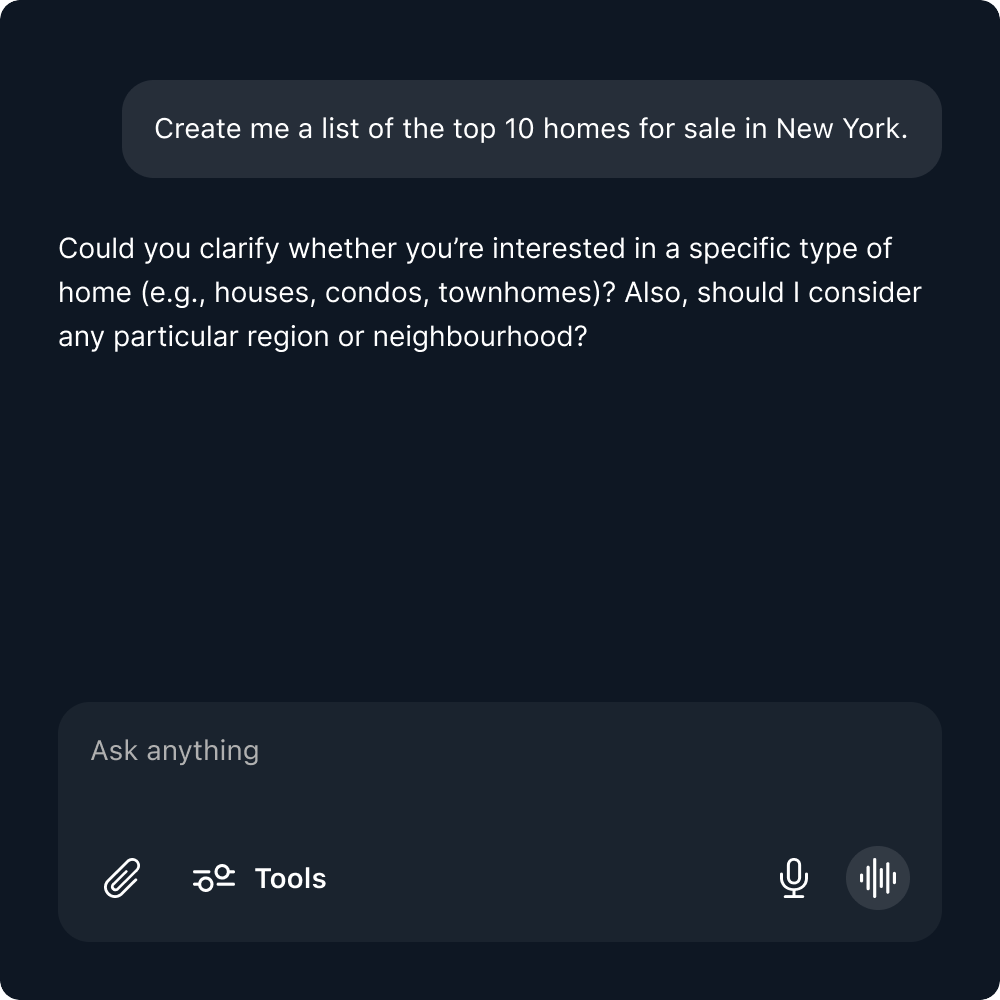8 Principles for Conversational UX Design
The rise of AI-powered, conversational interfaces marks one of the most profound shifts in the history of user experience design, and is arguably more disruptive than the leap to mobile. As users increasingly engage with systems through natural language, traditional UX paradigms rooted in screens, menus, and flows are giving way to dynamic, dialogue-driven interactions. Designers now face a new imperative: adapt to designing with language, or risk becoming obsolete.
I believe this transition demands an entirely new approach to interaction design. Conversational UX isn’t simply a layer on top of traditional UIs; it’s a new foundation that will either incrementally or immediately displace its command-based predecessor. To navigate this landscape, designers must embrace a new set of capabilities:
Promptcraft and conversation design: Instead of designing buttons and menus, we now shape how AI responds by crafting smart prompts, mapping user intents, and setting up the right context. It's about guiding conversations, not just interfaces.
Trust through tone: To make users feel confident, we need to use language that’s natural, respectful, and transparent. The tone we choose helps users trust the system, even when things get unclear or complex.
Cognitive orchestration: We have to strike the right balance between letting the AI take the lead and giving users control. The experience should feel effortless and helpful, without overwhelming or underwhelming the user.
Systemic collaboration: Designers must work closely with engineers, data scientists, and product teams to align how the AI thinks (language models), how it learns (feedback loops), and how it's built (data pipelines). It's about creating unified, intelligent systems together.
To help designers navigate this shift, I’ve outlined eight essential design principles that form the foundation of effective conversational experiences along with visual examples based on some of the most popular AI chat systems currently available.. These principles blend the best of traditional UX with the realities of AI-driven, dialogue-based interaction:
1. Anticipate User Needs
Design systems that proactively assist users without requiring them to initiate every action. Leverage predictive models or connectors to surface timely, relevant information before users even ask.
Tip: Suggest actions based on what you know about the user.
2. Help Users Express Goals Clearly
AI is only as effective as the input it receives. Great UX in this context means designing interfaces that help users articulate their intent—whether through prompts, constraints, or examples.
Tip: Offer structured prompt suggestions as the user types.
3. Learn from Users Iteratively
AI thrives on feedback. Design mechanisms that collect additional context, corrections, preferences, and exceptions then make sure the system evolves accordingly.
Tip: Ask follow-up questions to improve response quality.
4. Offer Multiple Input Options
Clicks and taps are just one part of the interaction spectrum. Voice, gestures, camera input, and even ambient signals (like location or movement) must be considered.
Tip: Let users switch seamlessly between text and voice, or better yet, default to voice if you know the user is actively engaged (e.g. driving).
5. Embrace Open Configuration
Allow users to refine, adjust, or experiment with AI-generated outputs. Interfaces should expose meaningful controls that help users craft effective prompts and inputs.
Tip: Embed tools with preconfigured input options within the chat.
6. Allow for Human Override
Users should always be able to step in and redirect, pause, or reverse AI-driven actions. This is about trust, transparency, and maintaining agency.
Tip: Display an option to manually edit, regenerate, or stop output in every chat flow.
7. Display Logic Transparency
AI decisions are often opaque, which can lead to confusion and distrust. Transparency is essential, especially when AI influences important outcomes.
Tip: Include contextual source information or a “Why this?” button under key suggestions.
8. Preserve User Privacy
Ensure privacy is embedded throughout your conversational interface. Only collect essential data, clearly explain why it’s needed, and let users control how long it’s kept.
Tip: Provide users with an option where memory is disabled, and always give users clear control over what they store and share.
Conversational interfaces are becoming the dominant way people interact with technology, offering more accessible, intuitive, and efficient experiences than traditional GUIs. Within the coming year, most enterprises will depend on conversational AI for customer engagement, and companies that design dialogue-first will gain both operational advantage and deeper user trust. For UX designers, mastering conversational UX means crafting conversations that feel natural while guiding AI to act purposefully. Good luck out there.








